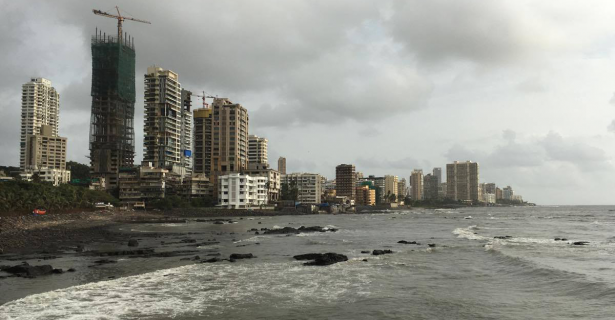India’s 70th anniversary of independence seemed a strikingly local affair in Mumbai. The flags of the local right-wing Marathi party, Shiv Sena, and Maharashtra state proved far more numerous than the national standard. Party politics was very visible on the streets; celebratory caravans of men clad in Shiv Sena shirts roamed the city by bike and truck, waving the saffron flag of Hinduism. The contrast with our own Independence Day was prominent. Whereas we see ours as typically apolitical and centered on national unity, India’s appears to be strongly molded by political party and locality.
It was only our second day in Mumbai, and though we’d been aware of the party’s stature, seeing its presence on the ground surprised us. A nighttime rally we came across that day featured a ten-person high human tower and a Marathi dance performance under a massive banner featuring the faces of the party’s heroes. Although our project was designed as a study of national politics and Uttar Pradesh state politics, we quickly found ourselves asking about Shiv Sena and Mumbai’s unique, local political atmosphere.
As foreign observers, we were surprised that India’s most cosmopolitan city would be dominated by such an ethno-centric party. However, in the Indian context, it makes more sense. Most Indian political parties center themselves around a select constituency from which they attempt to build complete support. Shiv Sena is no different. By building strong support among the Marathi working class, they have built an almost unassailable plurality large enough for them to maintain control in the Brihanmumbai Municipal Corporation, the governing body of Greater Mumbai. Though this hegemony has been challenged recently by their allies, the BJP.
We were struck, throughout the project, by the strength and sheer number of local identities and political affiliations in India. In fact, such is the influence of regional parties, that national politics is essentially only played out in the half of the country where local parties do not dominate national elections. From posters to flags to umbrellas, all bearing the party symbols or faces of candidates, and all during a non-election year, politics is exceedingly visible in India. The particular nature of Indian politics—its strong presence in everyday life and the openness with which people discussed it with us—made the experience of being there all the more insightful.

